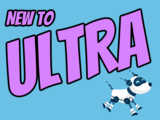Frequently requested features available in April
In early April, a frequently requested feature finally comes to Ultra courses. Conditional release of content to groups or individual students allows faculty to create remedial paths to certain students, give different content to undergraduate and postgraduate students in a course, among other use cases.


Conditional release of content is currently available based on date or grade. With the April update, instructors will be able to grant access to content based on group membership or individual user. These rules can be combined with date/time as well as performance (grades), matching near feature parity with adaptive release criteria in Original Blackboard courses.

Peer assessment is a practice becoming more common because it encourages development of students’ critical thinking abilities, gives them practice in critique of others in a professional manner, and allows for measurement of students’ analysis and communication skills. With the April release, qualitative peer review can be enabled for an Ultra assignment. Peer assessment features:
- Set different due dates for the initial assignment submission and the completion of peer review: Instructors can set how many reviews are expected from each student. Peers are assigned randomly and automatically.
- Late submitters and reviewers remain part of the task and can continue to participate: Instructors can clearly see who was late. This is a huge improvement over the implementation in Original Course View and superior to implementations found it other learning management systems where students who are late on anything can no longer participate.
- Tracking: Instructors can track students’ progress toward completion.
- Rubrics: Students can see the rubric that will optionally be used for the grade. Instructors can grade using a rubric.
- Complete, single view: When grading, the instructor can see all this information in a single view: the student’s submission, feedback provided by the students’ peers, and the feedback the current student gave to their peers.
- Anonymous mode for students: The identities of peers are hidden from students but viewable by instructors.
- Censoring: Instructors can hide reviews deemed inappropriate or harmful.

As this is a first release of the Peer Review option for Assignments, there are some relevant use cases that aren’t part of this development, but are planned as future improvements. Updates include quantitative reviews with rubrics, non-anonymous mode, group support, multiple-prompts with essay questions, and separate grades for submissions and reviews. Please watch the FAQs and myUMBC for additional information.
April also brings improvements to the Ultra course text editor for paragraph formatting, allowing the creation of more rich and customizable pages. These include: Clear formatting, text alignment, line height, and undo. Text alignment includes right to left, which will support several language courses.
Finally, with this update, Blackboard improved the timeliness and performance of notifications for all users by no longer generating notifications for users with more than 500 enrollments. This includes emails, push notifications, and the Activity Stream. A user with a large volume of course enrollments will still have access to all course resources but won’t receive notifications regardless of their settings.
The next update to our test environment will take place on April 6, 2021. Faculty who are interested in test driving new features before they are released to production should open an RT ticket to request early access.
As always, if you have any questions about teaching, learning, and technology at UMBC, please consider the following options:
- PIVOT | Academic Continuity | Keep On Teaching | Student Technology Resources
- Check our extensive FAQ collection
- Open a ticket via RT
- Follow the Instructional Technology & DoIT myUMBC groups
- Request a consult with instructional technology staff
Posted: March 29, 2021, 10:57 AM
